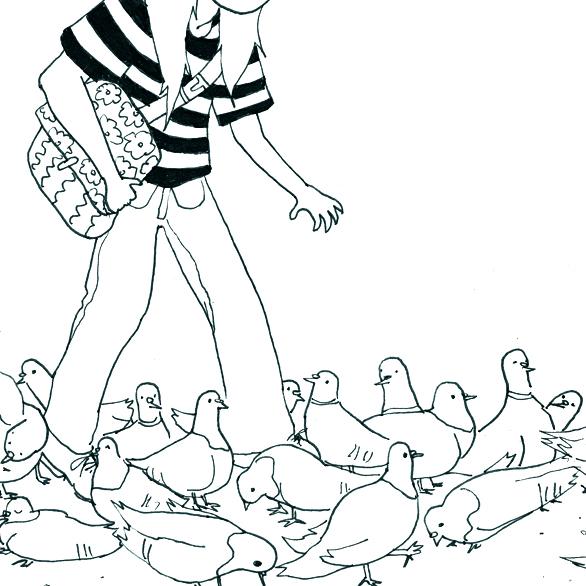“Melancholia” (2011) is a film written and directed by Lars von Trier in which everybody is a bitch and a great big planet aptly called “Melancholia” comes crashing into Earth and kills everybody and everything in a giant explosion. Von Trier’s got an amazing knack for stunning visuals and frustratingly poetic plotlines, but the only reason why I watched this film from beginning to end was because I had nothing else to do and I didn’t feel like digging around in the virtual bin-O-movies that is the independent section of Netflix.
I understand that writers who want their readers to have a fairly decent idea of what a particular movie is about should give a premise for what happened in the film, but what I said about bitches and planets and explosions is about as much premise as you need. Everything else is superfluous — especially the 131 minutes following the first (stunning) sequence. Kirsten Dunst plays the beautiful, intuitive, narcissistic, nihilistic Justine whose only role is to fuck with everybody’s feelings and to be the biggest, most inconvenient crybaby the world has ever seen. Charlotte Gainsbourg plays Justine’s sister, Claire, and is a rigid, panicky, too-forgiving, overbearing, pushover wife of Michael (played by Alexander Skarsgård). Michael, by the way, is a hateful, self-important, I’m-rich-and-I-know-it-let-me-brag-some-more coward of a liar of a husband.
I don’t really care about spoiling this movie, because von Trier pretty much spoiled it on his own, so I’ll give you some advice I wish I had before I watched the whole damn thing: only watch the opening sequence. Once the titles start rolling, turn off your TV or computer and go do something else. The opening sequence is stunning, surreal, excellent, and it frustrates me to no end (haha, apocalypse joke) that the film had anything tacked on to that sequence. Von Trier really flexed his creative muscles in the beginning; the visual force of Dunst’s expressions, Gainsbourg’s visible and relatable fear, and the brilliantly appropriate color palette made the opening one of my favorite ideas. The lack of dialogue is what gets me- after all, what is the point of using forms of communication (like speech) that are so completely incapable of expressing the truth of a situation so fatal when the language of the body, time, color, and atmosphere so accurately and so forcibly describes the fear, frustration, futility, and sorrow of impending disaster?
BUT NO. Von Trier just keeps going, negates the poeticism of his four-dimensional end-of-history painting by dragging us through silence, unneeded tension, and silver-lighted dreamscapes along with people who are so polarized, so unrelatable, that if I had been there with them, at their (terrible) receptions and (painful) dinners, I would have spent the majority of my time throwing rocks at their heads, hoping to put their lights out with my own tinier versions of “Melancholia,” courtesy of Shut-up-and-die-already.
Sure, that may have been Von Trier’s whole deal, to make his audience loathe his characters but love his style, and he is certainly successful at that. However, it makes very little sense to me to pair the opening sequence with the other part of the film, because they subtract from one another. The opening could have existed independently and would have evoked a wide range of reactions. The second half, had it not been introduced and summed up by an opening sequence, could have exercised a powerful sense of futility and the static nature of the characters could have been far more effective. If you are going to watch “Melancholia,” watch either the first five or six minutes, or the last 131 or 132 minutes, but not both of them together. Better yet, just don’t watch it at all. You could probably get more visual and emotional stimulation from a 1000th screening of James Cameron’s “Avatar” or Sam Raimi’s “Spider Man 3.”







